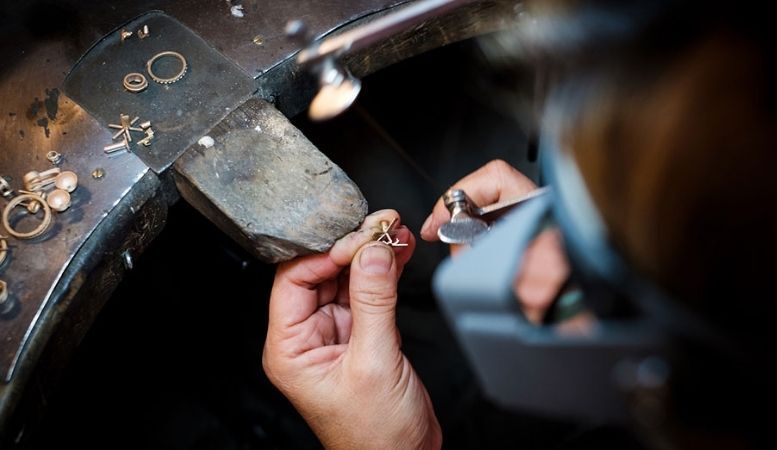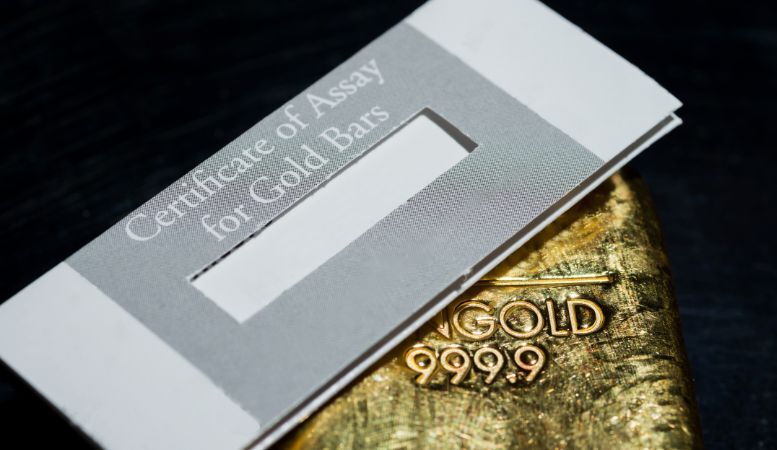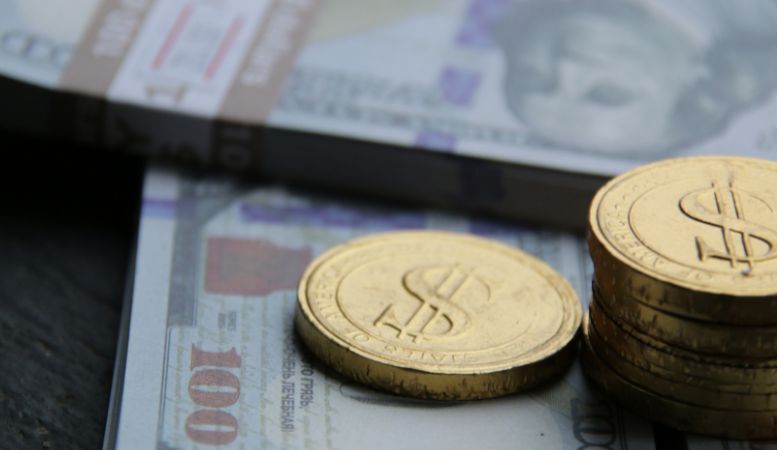Table of Contents
Investing in gold bullion relies heavily on its purity, since purity is a major part of determining the authenticity of the precious metal. But what is gold purity, and how does it impact your potential investments? This guide explains everything you need to know about measuring gold purity so you can get the most out of your gold jewelry, coins, and other valuables.
Use this information as a starting point on your investment journey. At Oxford Gold Group, we have additional resources available so you can make smart investment choices when buying or selling gold and other precious metals. Our experts are here to answer any other questions you have about gold purity, so you can determine the true value of your gold items.
What Is Gold Purity, and How Is It Measured?
You’ve probably heard the term karat as it relates to gold jewelry, but what exactly does that mean? This is how dealers measure the gold content of an item.
A karat is a percentage of gold in the entire piece: 1/24, or 4.1667% of the whole. Pieces without any type of gold have zero karats, while a measurement of 24 karats is pure gold.
Measuring gold purity is important because it dictates the base metal’s percentage and ultimately determines a set standard for buying and selling gold items. For example, the United States sets the legal standard of 10 karats for an item to be classified as gold. This standard can vary in other countries, though overall, measuring gold purity gives consumers transparency in their metal content.
The range of 0 to 24 karats is a simple way to quantify the gold content. However, this measurement actually represents a percentage of gold compared to other metals. For example, a 10-karat gold ring contains 42% gold, and the remaining metals are other alloys.
To calculate the total percentage of gold in an item, divide the karat measurement by 24 and then multiply that by 100. Using the 10-karat gold ring example, you would take 10 karats / 24 x 100 to get 42%.
You can also measure gold purity by millesimal fineness, which is the amount of pure gold compared to other metals in the item in parts per thousand. By this unit of measurement, pure gold has 999.999 fineness.
Common Terminology Used in Gold Purity Measurement
- Gold purity or fineness: gold-to-metal additive ratio
- Bullion: precious metal in its bulk form, such as gold bars, expressed in mass instead of value
- The assay: test that determines metal content and quality
- Carat: unit of measurement for precious stones equivalent to 200 grams
- Karat: unit of measurement for gold purity—the higher the number of karats, the finer the gold, with 24 karats being the finest
- Hallmark: a symbol stamped on a piece of precious metal to certify its standard of purity
- Millesimal fineness: system that indicates the purity of precious metal by parts per thousands instead of karats
- Troy ounce: equals 31.1034 grams, or about 1.09714 avoirdupois ounces
- Troy weight: system for measuring precious metals and gemstones—a whole troy pound is equivalent to 12 troy ounces instead of the 16 avoirdupois ounces contained in a standard pound
Measuring Gold Purity Using Karats
Understanding how to calculate the gold content of your product is essential when shopping for gold products. You can achieve this by knowing the number of karats in your piece of gold.
The following conversion chart will make it easy for you to calculate the purity of your gold.
| Number of Karats (K) | Parts of Gold | Gold Purity (%) | Millesimal Fineness |
| 8 | 8/24 | 33.3 | 333 |
| 10 | 10/24 | 41.7 | 416 – 417 |
| 12 | 12/24 | 50.0 | 500 |
| 14 | 14/24 | 58.3 | 583 – 585 |
| 18 | 18/24 | 75.0 | 750 |
| 22 | 22/24 | 91.7 | 916 – 917 |
| 24 | 24/24 | 99.9 | 999 |
We observed earlier that karats are the ratio of gold to other metals or alloys in your gold product. On the other hand, millesimal fineness is the percentage of gold expressed in parts per thousand.
It’s also worth noting that a higher karat doesn’t necessarily mean you have a better quality gold. It only means that you have a more pure, more expensive gold. Keep in mind that the less pure the precious metal is, the more alloys it contains.
The higher the number of alloy metals, the stronger the gold. Jewelry manufacturers prefer this type of gold to 24-karat gold. Pure gold is highly soft and vulnerable to damage.
However, a higher karat gold resists tarnishing much better than lower karat gold. What’s more, a higher carat gold has more value than its lower karat counterpart. By keeping these points in mind, you’ll have an easier time choosing the purity level that best suits your needs.
Simple Ways To Determine Gold Purity

It’s advisable to buy your precious metal from a reputable dealer to avoid the risk of purchasing counterfeit gold. However, knowing how to test the purity of gold can also save you many hassles. Here are some simple techniques to perform at home to determine if your gold is authentic.
The Magnifying Glass Test
This is perhaps the most straightforward test for gold at home. You only need a magnifying glass and your precious metal. Inspect your gold item methodically using the magnifying glass for these visual signs:
- Signs of discoloration – Environmental factors don’t affect the properties of gold. If you notice any discoloration marks on your gold, then it’s gold-plated or fake gold.
- Strange color and shininess – Gold features an attractive soft yellow color and is not extremely shiny. If you have a shiny, yellow, or reddish piece, then it’s not pure gold.
Hallmark or Stamp Test
Another simple home test for gold is the hallmark test. You may also require a magnifying glass to inspect any gold hallmarks or jewelry markings on your gold product. You can find the markings on the surface or near the clasp of your item.
These markings should indicate at least the purity of gold in karats or millesimal fineness. Some gold jewelry also comes with the manufacturer’s stamp. You should be wary of the following hallmarks as they are an indication of a gold-plated product:
- HGP
- GF
- HEG
- GP
- GEP
- RGP
Also, avoid gold items that contain the numbers 800, 925, and 950 because they’re silver hallmarks. Otherwise, you may end up buying fake gold. The hallmark test is not 100% foolproof, so you can only use it to determine if the gold isn’t pure or authentic. You might want to try other tests if you have doubts about your gold’s authenticity.
The Acid Test
The acid test works by harming artificial materials in your precious metal. A nitric acid test cannot affect the properties of pure gold. Start the test by making a small mark on your gold piece to penetrate the surface. Add a drop of nitric acid to the spot and see how it reacts.
Fake gold will instantly turn green on the spot the acid touches. Genuine gold won’t react to the acid, leaving you with a transparent liquid with no color change.
The Magnet Test
If you’re looking for a convenient and portable test for gold purity, the magnetic test is a perfect option. You can easily carry the magnet around in your pocket. So, how does the magnetic test work?
A magnet doesn’t attract pure gold, while fake gold and various alloys will attract the magnet. If you unknowingly purchase a piece of item that looks like gold, this test can help identify the underlying metal.
The Float Test
This test only requires placing your gold product in a cup of water. Gold has a high density of 19.32 g/ml, so genuine gold will instantly sink in the water. Fake or gold-plated items usually hover or float on the surface. You should expect a gold alloy to tilt up halfway. The float test is not 100% accurate because some fake items may contain other heavy metals that sink in water.
You might want to consider trying another test if your piece sinks, but you still doubt its authenticity. If your item rusts or gets discolored over time, it’s undoubtedly fake.
Advanced Techniques for Testing Gold Purity

If you have difficulties testing your gold at home, you can hire a reputable gold dealer or jeweler to help you test the purity of your precious metal. Here are some of the advanced techniques that professionals use to identify fake gold.
Melting and Sampling Spectrum Detection
While this technique is expensive, it is one of the most comprehensive. It capitalizes on a thermal-analytical technique called Differential Scanning Calorimetry. It involves placing a sample of the piece to be tested in a Differential Scanning Calorimeter and subjecting the sample and reference piece to the same temperature intensity. This technique helps to identify fake gold as it will have significantly varying heat properties from genuine gold.
Metallographic Analysis and Smelting Identification
The metallographic analysis technique applies the concept of metallography to detect fake gold and usually involves optical microscopy or scanning electron microscopy. Smelting consists of melting the piece of gold to be tested. Fake gold will only produce other metals like zinc and copper after the melting process.
X-Ray Fluorescence (XRF)
This technique is probably the simplest among the advanced gold detection options. It involves the emission of an X-ray photon beam that hits the atom of the piece being tested. Once the beam collides with the sample atom, electrons of various elements produce varying energy intensities. If your gold contains other elements, it will release different intensities of energy, confirming its fakeness.
Why Measuring Gold Purity Is Important for Jewelry and Bullion
Gold is a valuable metal, so you want to know exactly what you’re paying for. Measuring gold purity is crucial to determining the value of your investments. Otherwise, you may end up at a significant loss.
For example, if a jeweler claims a necklace features 24-karat gold, you’ll likely pay top dollar for it. Should you go to resell this piece of jewelry and discover that it does not contain pure gold, the value depreciates, and you can’t make a profit on the sale. Getting an accurate measurement of gold purity before buying can help you avoid this.
This is especially essential for anyone looking to invest in gold bullion. Most experts recommend investing in gold coins or bars that are no less than 99.99% pure gold, so you need a way to determine the purity of the bullion before you buy. The cost of investing in precious metals can quickly add up, and choosing gold bullion with a near-perfect purity level protects your assets.
Oxford Gold Group offers a range of gold products that meet this purity standard, so you can add physical gold, like gold bullion, to your investment portfolio. We want to ensure your long-term wealth preservation with precious metals that hold their value thanks to their high purity content.
The Role of Certification and Third-Party Testing in Ensuring Gold Purity

Whether you’re looking to buy gold jewelry for a loved one or invest in physical gold, it’s crucial to have the metal tested and certified by a third party. This protects you from scammers looking to take money from you by promising you an object with 24-karat gold that is instead mostly a mixture of other metals.
Make sure you do your research before purchasing any item marked under a gold purity standard. If you are looking at a piece of jewelry, read all the reviews from the jeweler and ask if you can see them run an electric tester over the item. Any jeweler who refuses to show proof of gold purity may be trying to make a fraudulent sale instead of supplying authentic gold pieces.
When it comes to gold bullion, reputable dealers sell objects that comply with U.S. Mint standards and show proof with a certificate of authenticity. Investors need this certificate to strengthen their portfolios and prove that their assets are worth their current market value.
How To Read and Understand Gold Purity Marks
If you look closely, you may find some markings on your piece of gold. These markings, or “hallmarks,” indicate how much gold is in the object, if at all. Below are some of the most common stamped symbols you’ll find on a gold object and what they mean:
- EPNS (electroplated nickel silver): This marking indicates there is no gold content whatsoever.
- EPBM (electroplated Brittania metal): This mark indicates that the metal consists of copper, lead, or zinc instead of gold.
- GE (gold electroplate): GE means that your item features a brass base with a certain amount of gold applied to that base. To qualify for this gold purity mark, the added gold must be at least 10 karats with a thickness of seven millionths of an inch.
- HGE (heavy gold electroplate): This marking meets much of the same criteria as a GE mark, but it must be at least 100 millionths of an inch thick.
- GF (gold-filled): This marking describes gold content that is bonded to a base metal through heat and pressure. It requires a measurement of at least 10 karats, and the gold content must be at least .05% of the object’s total weight.
You may also see a collection of numbers such as 750, 916, or 999. These figures relate to the metal’s millesimal fineness and indicate that an object features 18, 22, and 24 karats of gold, respectively. The higher the number, the more gold content is in the object and the more money you can receive for it.
The Impact of Impurities on the Value of Gold

The more impurities there are within a gold object, the more it drags down its overall value. This may be minimal when looking at 24 karats versus 23 karats, but the cost can quickly change according to the other metals you detect.
Since there is a finite supply of gold on earth, the limited amount of gold makes it a valuable metal, but the higher the purity level, the more rare it becomes. This hikes up the value of an object even more. However, it is worth keeping in mind that higher-karat gold is softer since other impurities are not present. Softer gold is more prone to dents and damage but will not tarnish as easily as gold cut with other alloys.
If you are looking to invest in gold or are curious about the purity of your gold possessions, visit a reputable dealer who can test the purity with an XRF spectrometer. They will determine what impurities are within the item so you have an accurate karat measurement and can assess the overall value of your coin, jewelry, or bullion.
Tips for Buying and Selling With a Focus on Gold Purity
Gold has always been seen as a valuable metal and has a proven track record as a wise investment opportunity, given its stability during periods of economic turmoil. It’s possible to build your portfolio and make a profit on gold, but you must have a proper understanding of gold purity to succeed.
When buying physical gold, always be mindful of the source and whether you can trust their measurement of gold purity. For example, if you want to purchase a gold bar through an online dealer, check their website’s reviews and see whether other customers find them trustworthy. You should also do this online research for any jeweler you plan to buy gold pieces from, as well as ask them to perform an electric purity test in front of you.
Once you get the necessary information about your gold dealer, you can purchase the item, but make sure to keep your invoice. This is especially useful if you decide to sell your gold in the future. Make sure you keep all the original documentation that came with your gold purchase, whether that be a jeweler’s invoice or a certificate of authenticity for a gold coin.
This documentation will come in handy as you go to sell your assets. If the price of gold has increased, you’ll enjoy a profit, but only if you can prove that you have an object with a set purity level. Just like when you bought, do your research and only go through a trustworthy source for selling your goods.
You should also research the current market and have an idea of what your gold piece should sell for instead of agreeing to the first price a merchant gives you. Knowing the trajectory of gold prices can help you negotiate accordingly so you can sell your pieces for a profit.
The Role of Reputable Dealers

Gold purity plays a significant role in pricing, buying, and selling gold products, so using a reputable dealer is essential to determining the purity of your gold. These companies specialize in trading gold bullion so investors can diversify and strengthen their portfolios in hopes of preserving long-term wealth. Reliable dealers understand how gold purity measurements impact the value of the metal and provide transparency on the topic.
In many cases, these dealers only buy or sell gold items that meet a certain purity level. This ensures that they receive the best price for the trade and maintain a reputation as a leading choice among bullion investors. They treat all their precious metals with care and keep them in their original packaging to prevent damage and maintain the object’s value.
If you need help finding a precious metal dealer, Oxford Gold Group can help point you in the right direction. We deal exclusively with products that meet government regulations and the highest purity standards. Browse our selection of gold bullion and coins if you want to expand your portfolio with physical gold.
FAQs
Are you still curious to know more about gold purity? Get answers to some of the most frequently asked questions we receive at Oxford Gold Group.
What Unit Is Used To Measure the Purity of Gold?
Bullion dealers and jewelers measure gold between 0 and 24 karats. This value determines how many parts of an item are gold compared to other metals. You can also measure gold through millesimal fineness, or the amount of gold compared to other metals in parts per thousand. Pure gold is 999 gold or 24-karat gold.
What Is the Difference in the Weight of Gold and Purity of Gold?

The weight of gold uses either the gram as a unit of measurement or the troy ounce, which equals 31.1035 grams. This measurement tells you how much an object weighs in gold but not how much of the object is other metals. Gold purity tells you how many parts of an object are gold and how many parts are copper, nickel, or other metals.
What Is the Lowest Karat of Gold?
You measure gold purity on a scale between 0 and 24 karats. An object with 0 karats of gold consists of no pure gold whatsoever and may feature a hallmark that says EPNS or EPBM, signifying there is no gold content.
What Is the Purity of Gold in Bullion and Coins?
As an investment opportunity or collectible, gold coins and bullion have a higher gold purity. Gold bullion is typically only available in pure, 24-karat gold. On the other hand, coins may feature other alloys to improve their durability and therefore may not appear as pure gold, such as the popular American Gold Eagle coin.
While some coins may not feature pure gold, they come with official certificates of authenticity from the government, which ensures their value, regardless of the gold content.
Is It Even Possible To Have a Gold Bar That Is 100.00% Pure Gold?
It’s not possible to have a gold bar or object that has a higher purity rating than 99.99%. With today’s equipment, manufacturers can’t remove all traces of molecules belonging to an impurity from a piece of gold, so the accepted standard for pure gold is 999.999 millesimal fineness, which is just short of 100% pure gold.
Now that you have a better understanding of gold purity, you can make smarter investment choices when buying a piece of jewelry containing real gold or hunting down authentic gold coins or bullion. Remember, always work with a reputable dealer to correctly assess the gold purity of your item.
If you want additional resources, turn to the experts at Oxford Gold Group. You’ll find plenty of information that helps you make informed gold-buying decisions that offer long-term benefits.
Take advantage of our resources so you can build the best future for yourself, whether you invest in a gold IRA or start collecting gold jewelry.








